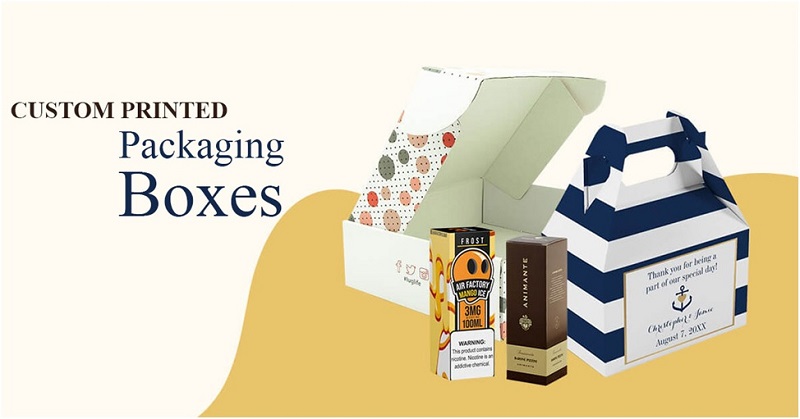Read About 9 Trendy Printing Techniques of Packaging Industry
Packaging printing techniques are one of the most important aspects of any packaging industry. It is a crucial element that attracts buyers and helps them understand what product they are buying. Packaging printing can be done using different printing techniques such as flexography, gravure printing, rotogravure printing, etc. Each technique has its own set of advantages and disadvantages. This article will discuss nine trendy printing techniques for the packaging industry and then suggest which one would be best for custom printed cbd boxes.
Printing Techniques of Packaging Industry
Lithography Printing:
Silicon plates are coated with an oily substance and then soaked in water to become soft enough to take impressions from metal typefaces. The plate will create images of letters when applied to paper or other surfaces using moistened rubber blanket cylinders called stones and finally polished dry with cloths before being fixed into frames ready for use.
Lithography printing technology has been around since 1796. Still, there have been several improvements, including better photo engraving machinery, improved dark printing, and printing from zinc plates instead of copper, making it more suitable for the packaging industry.
Offset Printing:
This printing technique is widely used where the whole surface of selected areas on an original plate or type body is wiped clean, leaving ink only in the recessed lines for printing onto paper. The process was invented by Ottmar Mergenthaler, who originally developed this system as a way to print more than 400 pages per hour which would otherwise take hours with traditional methods like letterpress printing. Offset lithography has been around since 1884, but there have been many improvements, including better photo engraving machinery, improved dark printing, and printing from zinc plates instead of copper.
One disadvantage with offset lithography is that it only prints images using black ink, so anything light-colored will not show up well without adding more colors to your packaging boxes.
Roll Printing:
In this printing technique, ink on the printing roll spreads out evenly onto the material without any pressure or force. This printing technique can be used for packaging, as it allows high-quality prints at affordable prices. We recommend this type of printing because you get both quality and affordability when choosing this production method.
Because of affordability and quality, most packaging companies use this technique for packaging printing. Using this technique, they provide the best printing results without giving a big hit to their client’s budget.
Letterpress printing:
This printing technique has been around since the 18th century, but there have also been many changes made to its machinery to improve quality control. It is an excellent option if you want your design to have texture and depth, such as dark shadows from ink sinking into paper fibers. However, letterpress printings tend to use up quite a bit of ink, so they are best left for small printing quantities.
UV printing:
UV printing is a technique that has been around since the 1980s, and it is mainly used for short-term promotions or low quantity jobs where printing is needed quickly because of a shorter drying time. This printing method can be done on any type of surface but if you want to get good results, make sure to use high-resolution artwork with plenty of detail to avoid pixelation.
The main downside about this printing process, though, would have to be durability, which isn’t too great compared to some other techniques available on the market today.
Cyanotype Printing:
It is the oldest printing technique, and Sir John Herschel invented it as a simple, fast way to make copies of text or drawings. This printing process can be used for packaging with designs that are more on the abstract side because this printing technology does not require any color.
This technique is perfect when you just want to use black and white colors on the packaging boxes, but it is not recommended when you want to use bold color combinations for your packaging boxes.
Printed Inks:
These are the most common printing techniques in use today, and they can range from screen printing (which uses plates and screens) to digital printing, which works by using inkjet technology. These methods work great for packaging because of the level of customization available; you have complete control over every detail of your design.
Flexography Printing:
This printing method is exclusively used for printing on flexible materials like plastic or aluminum packaging. It works by passing ink through an etched surface, and this process results in vibrant, long-lasting images with high-quality printing. Flexography printing has limited capabilities when it comes to customizing, but the colors are very vivid, which makes up for that disadvantage.
This printing technique is suitable for printing on textured surfaces, and it lasts long.
Flexography printing is a great option for printing packaging that the food industry will use because of its UV-resistant properties, which ensure that your product does not degrade over time as well as withstand contact with chemicals.
Silk Screen Printing:
This printing method allows you to print on any surface, even those made from paper or fabric materials such as banners, posters, etcetera. It works by spreading an ink solution onto the screen (made out of silk) and then pressing the material against this screen while simultaneously pulling back to create prints within certain shapes.
Silk screening has many advantages, including but not limited to being affordable and environmentally friendly since it doesn’t require any harmful chemicals.
However, printing inks are not as bright and strong compared to the other methods because they have fewer color layers. This will cause printing imperfections with smooth-surface materials like paper or fabric that don’t absorb ink well.
Another disadvantage is a more limited range of colors available for printing due to screens only holding one layer at most. It also requires you to manually paint an area of your design before printing it on another material which can be time-consuming and difficult if there isn’t enough space within the design itself without spilling over unwanted areas.
Conclusion
By reading the above-mentioned printing techniques, you will have a better understanding of the printing process for the packaging boxes. Now you need to choose a technique that perfectly suits your products. If you are still confused about making your decision, you can consult your packaging supplier for this.
A trusted packaging partner like Stampa Prints helps their clients in choosing the best packaging techniques for their packaging boxes. So, contact your supplier and choose an advantageous printing technique for your product’s packaging.



